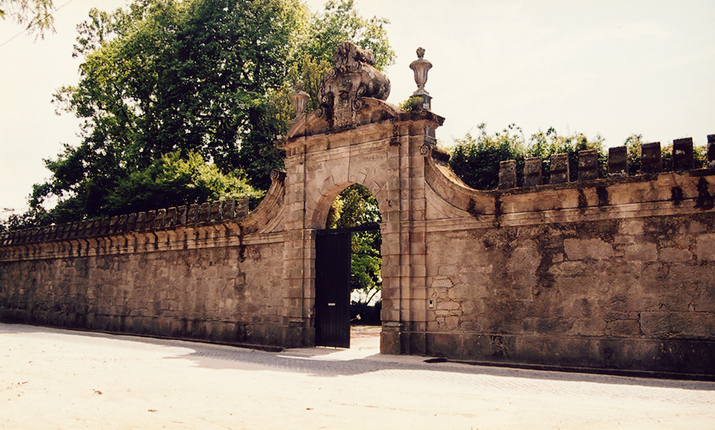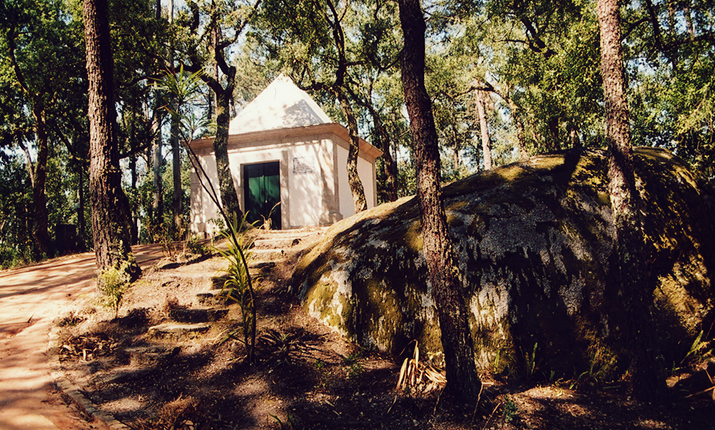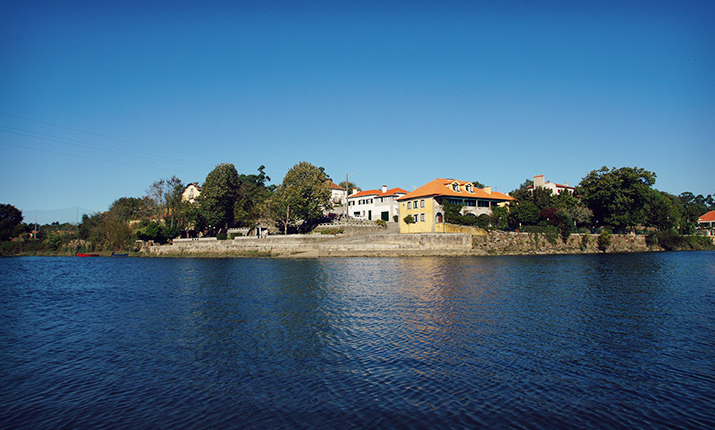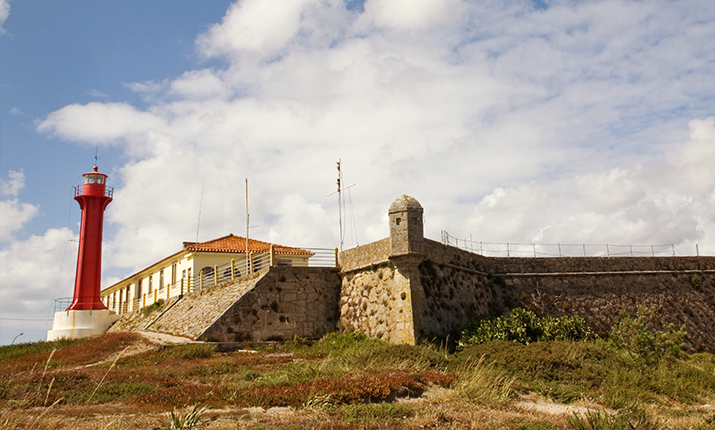

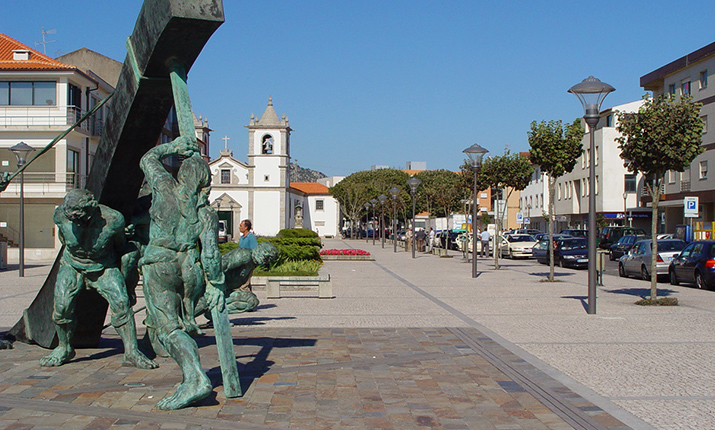


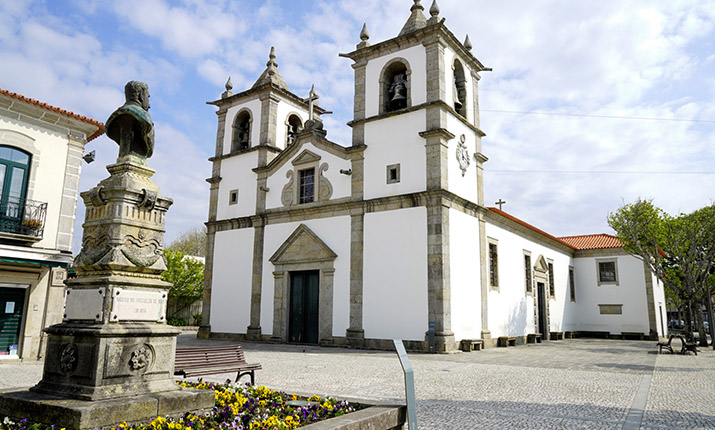

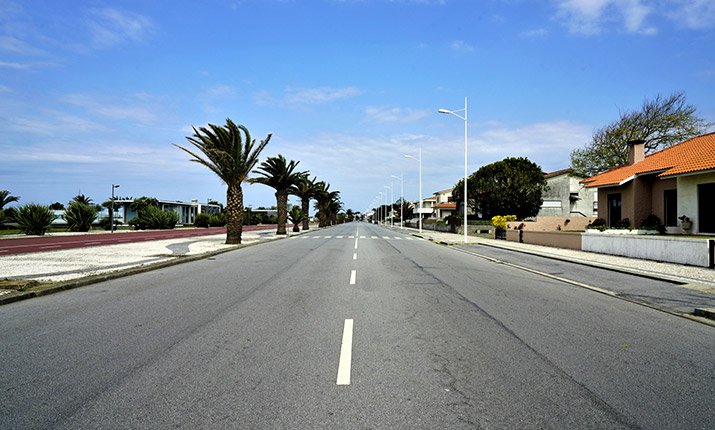
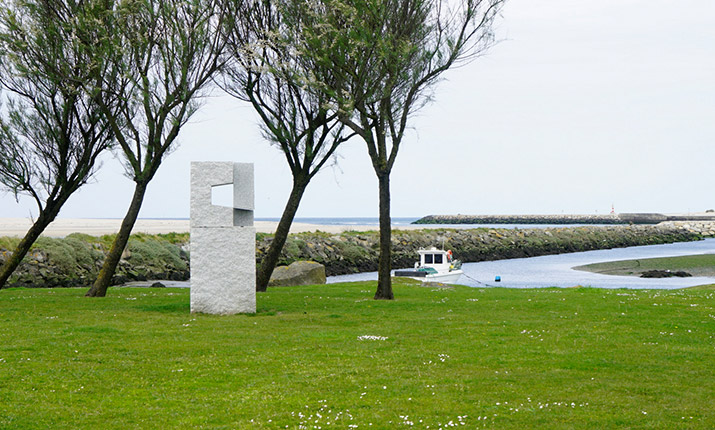

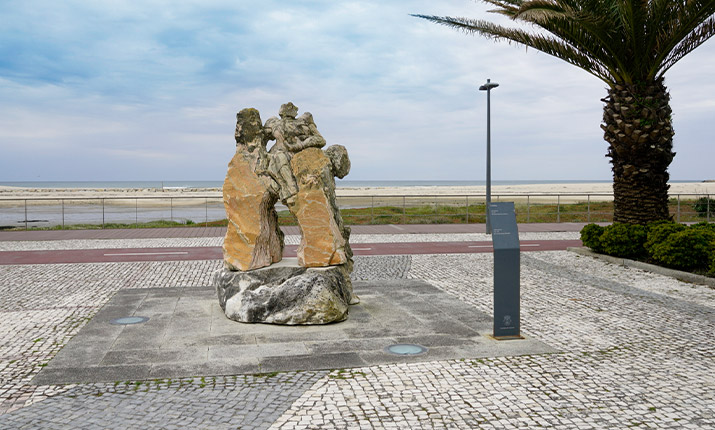
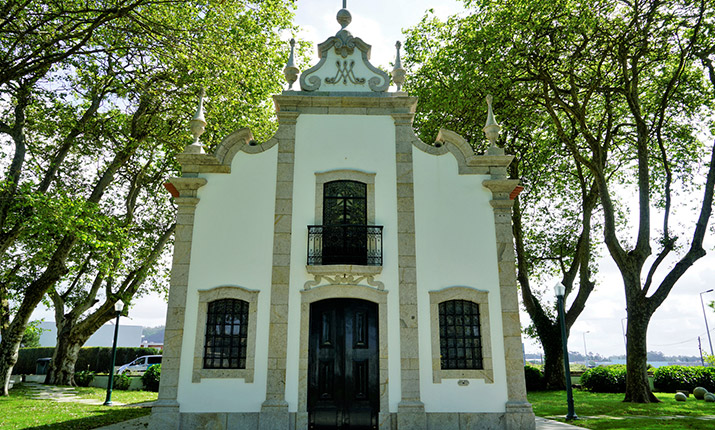
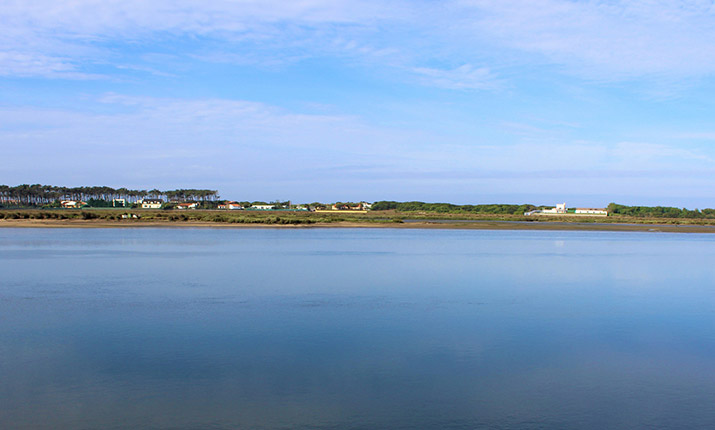
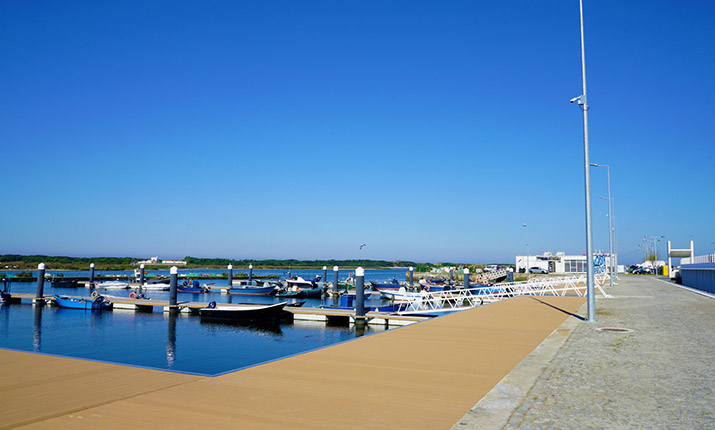
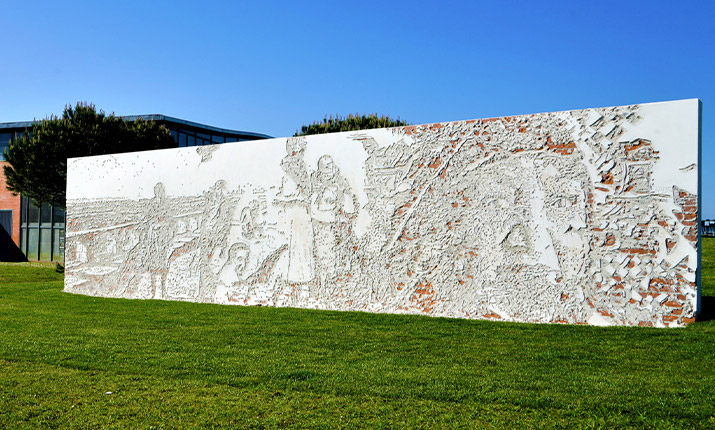
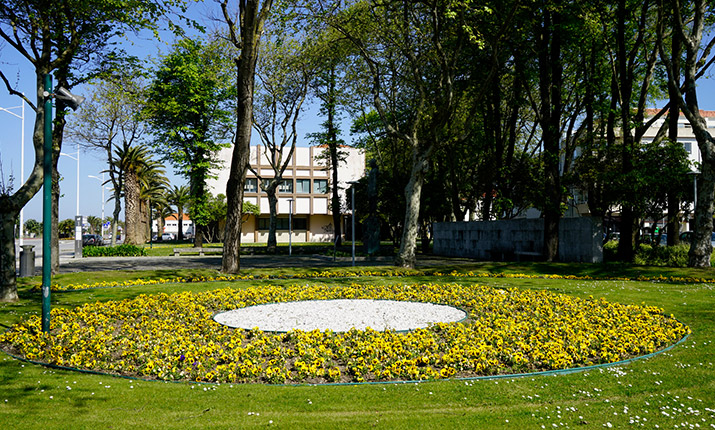
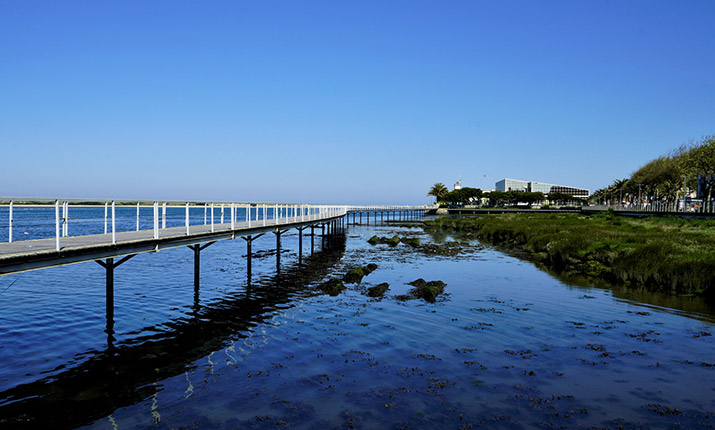
Esposende
Esposende's elevation to Village dates back to 19 August 1572, during the reign of King Sebastian (1554 — 1578). On 16 December 1886, it received the designation of Municipal Court and, on 27 October 1898, of Loca Judicial District. It was after the golden age of the art of sailing (between the 14th and 15th centuries) that Esposende reached its height through maritime trade. shipbuilding and ship repair (between 16th and 18th centuries).
This tour starts at the Tourist Information Centre of Esposende, a space composed of a customer service area, auditorium and a multi-purpose space. (edited) Here. you can watch a promotional film of the municipality, access the most diverse tourist information through personal contact with collaborators, collect some paper printouts or simply explore the interactive table. In addition, we can visit temporary exhibitions or purchase some local products and crafts. The interactive shop window, which is located outside the building, is available 24 hours a day.
Through Rodrigues de Faria Street,just south of theTourist lnformation Centre, we reach Dr. Fonseca Lima Square. Here, we can visit the Municipal Museum of Esposende, which is set up in the early 20th-century building (1911) of the then Theatre Club of Esposende, deviating from the mark of the architect Miguel Ventura Terra. In 1990, the Town Council decided to turn it into the Municipal Museum, which opened in 1993 under the mark of Bernardo Ferrão, the architect of the so-called School of Porto. The Museum of Esposende reflects the land where it was set up. On the ground floor, you will find the Room of Tiles for temporary exhibitions, which owes its name to the magnificent coeval Portuguese tiles from 1911, designed by Ventura Terra himself. In the two exhibition areas, on the lst and 2nd floors, the Museum displays the culture and the local heritage
On Comandante Carlos de Oliveira Martins Square, opposite to Dr.Fonseca Lima Square, we will find the Chapel of Senhor dos Aflitos. The fisherman of Esposende erected a stone cross painted with the image of Jesus Christ, naming it Senhor dos Aflitos (Lord of the afflicted), a clear evocation of the fears felt by those with a life at sea. In that same cross, later, was built a small niche that, later, in 1880, was transferred to the present location. In 1969 remodeling works were done, only conserving the façade of the previous building and the primitive painted cruise. The temple has a rectangular plan, with the facade facing west. The facade has a triangular pediment, surmounted by a trilobed cross resting on a plinth. The lateral pinnacles are of rectangular base.
After this visits, we move towards Barão de Esposende Street and Marquês de Pombal Square, where we reach another square, where the pillory is set. The Pillory of Esposende was set in front of the Town Council until 1910, and then dismantled and moved to its current site, where it was rebuilt – between 1925 and 1929 – due to its state of degradation. This is an interesting example of the municipal power. The plinth with pillowed faces sits on the traditional base of three steps. The octagonal pillar is surmounted by a capital with plant motifs and a cross of Christ. At the top, we can see an armillary sphere, the symbol of the Portuguese voyages in the 16th century. It is also worth mentioning the iron ring presence in the middle of the pillar. The pillories were intended to publicly punish those who would break the municipal laws. Such punishments included public humiliation or physical abuse. The condemned were tied to the pillory to serve their sentence and thus the purpose of the iron ring. Even when public punishments failed to take place, the pillory became the symbol of the municipal power and the autonomy of those free from servitude.
Through Narciso Ferreira Street we reach Sacadura Cabral Square, where we find the old buildings of the Farmers Guild of Esposende, converted in 2011 into Rodrigues Sampaio Municipal Forum, the headquarters of the municipal assembly of Esposende, which hosts various kinds of cultural events, such as shows or workshops. It is set up on an 18th-century house, which presented a façade with well-tended compositional elements finished in freestone – angle, cornice and plinth. This manor house is attributed to a foreign family of sea traders.
From Dr. José Manuel Oliveira Street we reach the Manuel de Boaventura Municipal Library. In 1980, a local library of the Calouste Gulbenkian Foundation was set up. At the end of that decade, the Municipality decided to proceed with the construction of a municipal library, which opened in 1992. The complex, which is currently occupied by the Municipal Library, is the result f the intervention of architect Bernardo Ferrão in the various building of the 16th and 18th centuries. The existing arc in one of them gives the name to the complex: Casa do Arco. The Library is placed in an área of over 1.100 m2 with several places for reading, audiovisuals, activities, such as cinema, theatre, lectures, and poetry recitals.
In addition to the general collections, the Municipal Library retains three special collections of significant value: the Poet António Correia de Oliveira Collection, the Silva Vieira Collection, and the Manuel de Boaventura Collection. In the Honour of the latter, the library bears the same name.
When going up Senhora da Saúde Street, from the Town Square, and exceeding the national road 13 (EN 13), we notice a wooded chestnut grove where the Chapel of Senhora da Sande is placed. The grove of trees that gives access to the chapel provides the site with a unique bucolic characteristic.
The current Chapel of Senhora da Saúde was not always known by this name. This designation is quite recent. It was originally dedicated to S. Sebastião (St. Sebastian), bearing this title for several centuries. The original chapel dated to the mid-16th century, but the current chapel is from late 18th century when it began bearing the name of Chapel of S. Sebastião e Soledade.
The facade is very simple, symmetrical and the white facade contrasts with the grey granite of the frames and angles. This small Marian shrine consists of a chancel, nave, choir, and sacristy, and is surrounded by a large churchyard enclosed by a granite wall and dotted with leafy plane trees skirting the access alley, named by the people as Souto (chestnut grove). On the south wall, we can observe a blue tile panel with a polychrome surrounding, designed by Manuel Gongalves Viana, representing Senhora da Sat’Jde (Our Lady of Good Health), with the following inscription: «N. Senhora da Saúde, pray for us Salus Infirmorum Hail Mary N. Senhora da Saúde of Esposende 300 days of indulgences to those who pray The Lord's Prayer, four Hail Marys and a Gloria Patri before this miraculous image».
Since 1902, a year after placing the image of Senhora da Saúde, the popular festival bore this name. but as it assumed the proportions and characteristics of a great pilgrimage of Minho. it became the "Festival of the Village". Today, it is designated as the "Festival of the Town" and is annually held on 15 August.
Returning to the town centre through Senhora da Saúde Stree we reach the Town Square. The Church of Misericórdia is part of a complex of buildings that also includes the Santa Casa da Misericórdia, whose Brotherhood was established in 1595.
The present temple dates back to 1893, according to existing subscription. The Chapel of Senhor dos Mareantes, an exceptional chapel, was built inside the church and classified as Property of Public Interest. It is worth admiring the magnificently gilded woodcarvings of a rich iconography, as well as the niches flanking the chancel with images representing the life of Christ (Christ and Zacchaeus, and Christ and the Samaritan woman). We must not also forget the coffered ceiling with polychrome woodcarvings, representing the twelve Messianic prophets. They are arranged in three series, in groups of four. Try to identify them: Hosea, Joel, Amos, and Micah; then, Isaiah, Nahum, Jeremiah and Ezekiel; and finally, Daniel, Haggai, Zechariah and Malachi. This ceiling displays, in fact, an extraordinary beauty and richness, and is easy to understand why this chapel is considered the jewel of the religious architecture of Esposende.
At one end of the Town Square, we can admire the bust of the poet António Correia de Oliveira, born in São Pedro do Sul ( Viseu) on 30 July 1879. As he married a rich property owned by Minho, in 1912 he came to live in the Manor House of Belinho ( Antas, Esposende). Influenced by Antero de Quental and Guerra Junqueiro, his poetry displays a popular and nationalist nostalgia, cultivating patriotic themes. Correia de Oliveira died on 20 February 1960
The original building where the Town Hall is currently set dates back to the 16th century, characterized by round arches forming an open porch on the facade. Set at the intersection of the main roads, the new blocks and street layout, which corresponded to the initial phase of urban expansion of the Village in 1572, were structured around it. From 1732 to 1758 and later, between 1870 and the central and northern part of the block, and the main facade facing south, surmounted by a platband on which angles there were vases, was ennobled. On the central part of the building, on top of the window-balcony, we can see the baroque carvings of weapons, framed by a small bell tower equipped with a clock, adding symmetry to the set. Throughout the 20th century, it has undergone several renovation and expansion works and started to occupy the entire block.
On the 1º de Dezembro Street, also knows as “Direita Street”, we may give in to our consumer spirit and purchase a souvenir in one of the shops from the busiest commercial street in town. A true outdoor shopping centre.
The Manor House of Valentim Ribeiro da Fonseca is located on 1º Dezembro Street, in the town centre of Esposende. Valentim Ribeiro da Fonseca built the Art Noveau building, destined for the family residence, in the early 20th century the mark of architect Miguel Ventura Terra. This Illustrious townsman was born in the parish of Palmeira de Faro, Esposende, in 1855. He early emigrated to Brazil, where he acquired a large fortune. He never forgot his homeland where he had played an important role- his name is attached to the construction of the Theatre Club and the Hospital. These two buildings, along with his house, today represents an undeniably valuable heritage, because they all have the mark of the great Portuguese architect Miguel Ventura Terra.
After “Direita Street”, on Rodrigues Sampaio Square, we will find the Mother Church. The original chapel dedicated to Nossa Senhora da Graça ( Our Lady of Grace) dates back to 1566. In 1758, after being completely renovated, the chapel became the Mother Church of Esposende, endowed with a chancel and a vaulted name with a sacristy, side altars, two pulpits and two bell towers, invoking Santa Maria dos Anjos ( St. Mary of the Angels), patroness of Esposende. Between 1885 and 1896, the church’s facade was improved and its interior enlarged, constituting three bodies build according to the pipe organ. In 1968, the bell tower is also equipped with a clock. In its interior, we highlight the stained-glass Windows, the tile panels, the choir and the baptismal font.
On Rodrigues Sampaio Square, we can observe the bust of António Rodrigues Sampaio. The liberal politician and journalist was born on 25 July 1806, in the parish of S.Bartolomeu do Mar. He held positions of great public importance, and even became the President of the Council of Ministers of Portugal ( 1881)). Rodrigues Sampaio was one of the greatest figures of Portuguese liberalism of the 19th century, and a unique journalist and exceptional parliamentarian. Considered a controversial, polemic and even revolutionary personality – although always consistent and faithful to his principles and purposes – he was a nationally renowned agitator, bearing the nickname “ Sampaio of the Revolution”, as he gained a reputation as the chief editor of the newspaper “ A Revolução de Setembro”. The constitutional monarchy flag was always in his heart. He died on 13 September 1882, in Sintra.
On Rodrigues Sampaio Square, at the western end, we will also find the Monument dedicated to the “ Man of the Sea”. Esposende always lived off the sea as well as its people, bringing them not only sustenance but also dangers and misfortunes. In celebration of the 500 years of the Maritime Discoveries, the Town Council decided to erect a monument to the “ Man of the Sea”. The statue, designed by the Brothers Bompastor, was inaugurated in December 1997. The monument is composed of five-figure – four men and a woman - and a boat’s keel. It symbolizes the effort of the people who are sustained by what the sea gives, and who built the necessary boats for work at sea.
From here, we move towards the Maritime Museum of Esposende, which is set up in the building of the Maritime Centre. Inaugurated in 1906, the modern Maritime Centre of Esposende has replaced the old “ house of the lifeboat” - a wooden shed that housed a lifeboat used for rescue services in shipwrecks of the fishing and trading community since 1876.
Until the 70s and the 20th century, the lifeboat of this Centre and its heroic crew made the difference between life and death at the sea in Esposende.
The building as fully recovered by the Association Forum Esposendense to become the current Maritime Museum inaugurated in 2012. The Museum holds a vast historical, cultural and sentimental collection, evoking the memory of the maritime community of Esposende. In addition, if we climb the turret, we have access to a privileged panoramic view over the city, estuary, and mouth of Cávado River.
The Municipal Swimming Pools of Foz do Cávado are integrated into a leisure complex between the “ Marginal Avenue” and the right bank of Cávado River. We can enjoy a freshwater indoor wave pool with a jacuzzi or the salt water outdoor pool. The complex also includes a health club, as well as a commercial área with restaurants.
On D. Sebastião Square, opposite to the Swimming Pool Complex of Foz do Cávado, we will see the statue of King Sebastian. On 19 August 1572, King Sebastian turned Esposende into a Village through a Royal Charted, and Esposende became independent from Barcelos. In the celebration of the fourth centenary of this very significant moment for Esposende, the Town Council decided to erect a monument in the memory of the monarch, on the square bearing its name. The Directorate General for National Buildings and Monuments of the Ministry of Public Works made their contribution by donating the statute. The inauguration of this monument of Lagoa Henriques, performed at Fundição Bronzes Artísticos, occurred in 1973.
Through Eng. Eduardo Arantes e Oliveira Avenue, after the Municipal Market and towards the north, through Piloto da Frita Street, we will find the Chapel of São João Batista, whose construction dates back to the 16th century. It was built on a stone platform with the format of a small turret on the river beach of Cávado River, north of the mouth of the stream Rego da Igreja. This turret was used to protect the chapel, especially during floods in winter. It has undergone several reconstruction works, in which one was performed in 1699, according to the inscription on the base of the cross that is on top of the pórtico. The current chape is the result f the works conducted in 1740.
In the vicinity of the chapel, we can find the cross, dated back to 1660, which originally stood in front of the chapel door, in half-moon square. At the end of the 19th century, it was transferred to the current location.
At the end of São João Street, towards the north, through Rocha Gonçalves Avenue, we will find Valentim Ribeiro da Fonseca Hospital, a project of Miguel Ventura Terra, commissioned by the benefactor and returned emigrant Valentim Ribeiro. Inaugurated in 1916, it replaced the services of the former Sam Manoel Hospital, also owned by Santa Casa da Misericórdia of Esposende. Set in a large garden área, on the north end of the town, it has retained its original character, despite numerous renovation and expansion works that modified the rear of the building.
The Hospital has an imposing neoclassical facade, facing west, with three symmetrical bodies, being the central body the largest, endowed with an access staircase and crowned with the Republican armillary sphere.
Let us proceed towards Eng. Eduardo Arantes e Oliveira Avenue through the bank of the Cávado estuary up to Lampreias Square, accompanied by a splendid view over the river.
The São João Batista Fort stands at the mouth of Cávado River, on the threshold of river and sea. The Fort is a small star-shaped bulwark with an artillery battery. The building dates back to the 16th century and was erected by D.Pedro II, who saw its construction extend to the next century. The protection of the entry of Cávado River was ensured by this fort until the French Invasions (19th century).
Today we can also see the Lighthouse of Esposende set in the Fort. It comprises a 15-meter cylindrical red tower made of iron, settled on a concrete base and finished off at the top by a torch with a range of 20 nautical miles.
The mouth of Cávado River, a merger of river and sea, is a spectacle no one should miss. The river spreads out in the estuary, in a slow curve towards the Atlantic. Protected to the west by the sandbanks of Ofir and to the east by the town of Esposende, this shallow water continuously moves towards its end, diving into the waters of the Atlantic. There are good places to admire this landscape of unique beauty: on the terrace of the bar nearby, or going for a stroll or bike riding through the marginal.
Death of the river I love strolling in Esposende to see the Cávado being emptied. There you will find the perfect bar for that. A river is the water’s childhood. The banks, the bed -everything protects it. It is at the mouth where the adventure of the open sea begins. The family tree is no longer visible on the ring finger. The possibility of any past has vanished. It represents the interaction with the distance and with the infinite. It embodies the unknown. There is always water launching itself in this adventure at every opportunity. Goodbye green banks, goodbye bridges, goodbye known fish. Now it is just the salty sea, the adventure without return, even in high tide. It is in Esposende that I like to watch for hours, in return for an “imperial”, the death of the river that has aged by breaking through rocks and plants, that fought, that got around obstacles… It is impossible to go back. Now it is death. Or life.
Ruy Belo, in Obra poética I, 1984, p.182*. *Translation of excerpt
